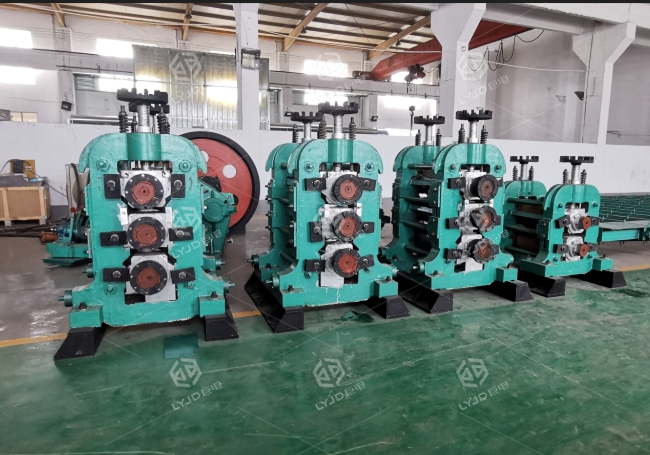The steel rolling production process is quite complex. Although the quality requirements of rolling products are improved, the range of varieties is expanded, the application of new technologies and new equipment, and the various processes that constitute the process will undergo corresponding changes, but the entire rolling production process is always composed of the following parts: The following basic processes :
(1) Preparation of blanks, including cleaning of surface defects, removal of surface oxide scale and preheating of blanks.
(2) Billet heating is an important process in the hot rolling production process.
(3) Steel rolling is the core of the entire steel rolling production process. The billet is formed by rolling. The rolling process plays a decisive role in the quality of the product.
The final rolling effect of the rolling mill is closely related to many factors, including not only the heating time, but also the characteristics of the plate shape. How to quickly determine the heating time of the rolling mill before rolling?
The heating time of the rolling mill refers to the total time required to heat the billet to the temperature required by the process. Usually, it will be affected by a series of factors such as the steel type, the shape and size of the billet and its configuration in the furnace, furnace structure and thermal system. Impact.
The determination of the heating time of the rolling mill can be roughly calculated by a relatively simple empirical method, or it can be calculated theoretically. For better results, usually two methods are used together, and a more reasonable result is selected.
Due to the different working conditions of the pipeline steam-water mixture in the billet heating furnace, they will affect the circulation after the merger.
After practice, not all rolled steel is heated and rolled through rolling mills, but most of them are cooled down. Only after the appropriate temperature can obtain the ideal rolling effect.
Under normal circumstances, poor flatness also has a great impact on the rolling operation of the rolling mill, especially in the finishing rolling stage, the change of the rolling speed will affect the changes of factors such as tension, temperature and friction coefficient.
This will result in a certain elastic flattening deformation between the work roll and the backup roll.
In order to reduce this effect as much as possible, it is necessary to control the flatness within a reasonable range, and at the same time optimize the performance of the equipment to start rolling in a good state, which can avoid the occurrence of errors and improve the rolling quality of the product. manufacturing quality.
We, Judian, are a manufacturer of rolling mills. Welcome to follow us to learn more about steel rolling production.

Please send us your request and we reply to you with in 24 hours.
Submit Request